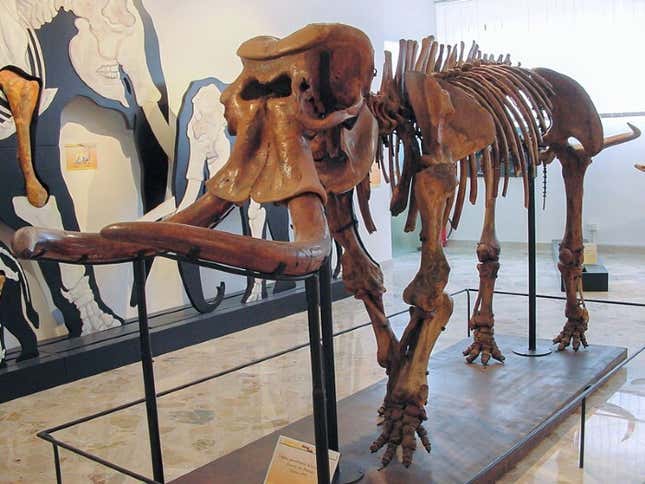
Tens of thousands of years ago, so-called dwarf elephants inhabited the island of Sicily off the coast of Italy. Apparently, it didn’t take long for these elephants to shrink after their arrival on the island. New research suggests that the 10-ton behemoths that originally came to Sicily slimmed down quickly, losing as much as 400 pounds on average with each generation.
Islands are known for giving rise to isolated populations that look and behave very differently from their non-island cousins. As a result, studying islands has long given scientists, including Charles Darwin, key insights into how evolution works (this phenomenon also gave the creators of Pokemon a nifty concept for a pair of games).
One example of this divergence is in the Mediterranean islands nestled between Europe, Asia, and Africa, where dwarf elephants once roamed in the prehistoric era. Many distinct species of these tiny titans have existed throughout time, and some may have only gone extinct about 10,000 years ago. As for how small these guys got, they’re thought to have been around 3 to 6 foot tall and between 400 pounds to over a ton. For comparison, today’s elephants in Asia and Africa range from 6 to 13 feet tall and 2 to 7 tons, depending on the species and gender.
According to research published last week in Current Biology, though, it’s likely that at least one species of dwarf elephant from Sicily quickly lost its hefty frame soon after their ancestors started living there, probably because of limited food on the island.
The team of researchers, based in the UK, Germany, Iceland, and Italy, studied 11 samples of ancient elephants collected from the island. Thanks to one sample collected from Sicily’s Puntali Cave, they were able to reconstruct the mitochondrial DNA—the bit of DNA that’s only passed down by the mother—of one dwarf elephant. This reconstruction, all the more remarkable because warm weather tends to degrade ancient DNA, and other lines of evidence allowed them to roughly estimate how long it took for the elephants to shrink.
According to the authors, the elephant was part of an extinct genus called Palaeoloxodon and existed somewhere between 175,500 and 50,000 years ago. Its likely direct ancestors were the straight-tusked elephant (Palaeoloxodon antiquus), which towered 12 feet high and weighed around 10 tons as adults. Sometime around 200,000 years ago, the team theorizes, the lineage split off and rapidly (in evolutionary time) lost its tonnage. In their maximum estimate, the ancient elephants dropped 440 pounds (200 kilograms) and about 4 centimeters per generation, to the point of becoming nearly one-tenth their ancestor’s size, at around 6 feet tall and 1.7 tons. To put it in more familiar terms, the authors say, that would be like modern day humans becoming the size of rhesus monkeys, which are 25 inches tall and just 26 pounds.
“The magnitude of dwarfing resulting from this rapid evolutionary process is truly striking, resulting in a loss of body mass of almost 85% in one of the largest ever terrestrial mammals,” said study author Axel Barlow, an expert in paleogenomics and molecular bioscience at Nottingham Trent University in the UK, in a statement from the university. “As the descendants of giants, the extinct dwarf elephants are among the most intriguing examples of evolution on islands.”
Other research has suggested that island dwarfism can often be traced back to the relative scarcity of food, which the researchers agree is probably responsible for what happened here. And they hope their techniques used to reconstruct the ancient DNA in this study could help others delve into the evolutionary journey of these small elephants and other ancient animals that lived in warm climates. As for the dwarf elephants included in this study, their remains are now stored at the Gemmellaro Museum at the University of Palermo in Italy.